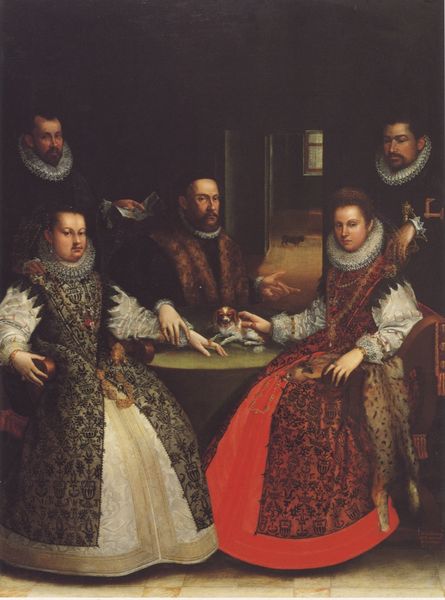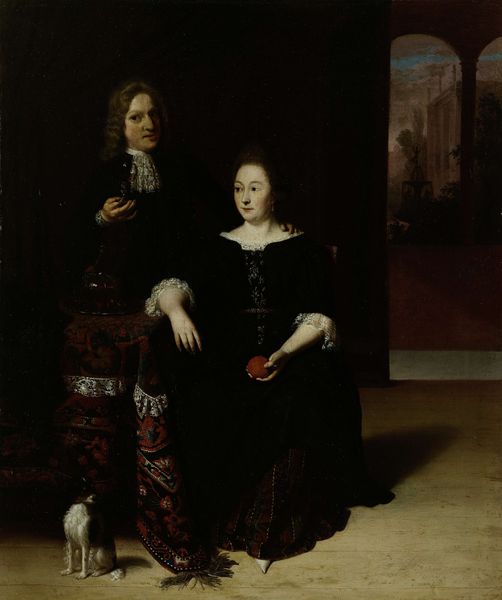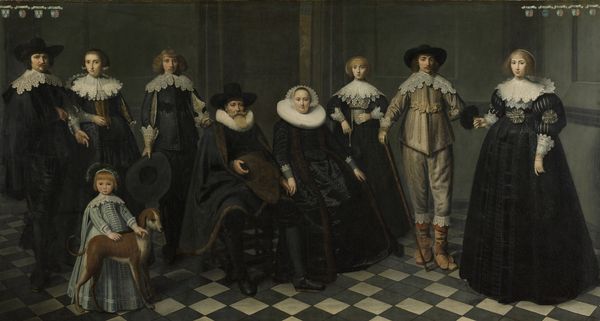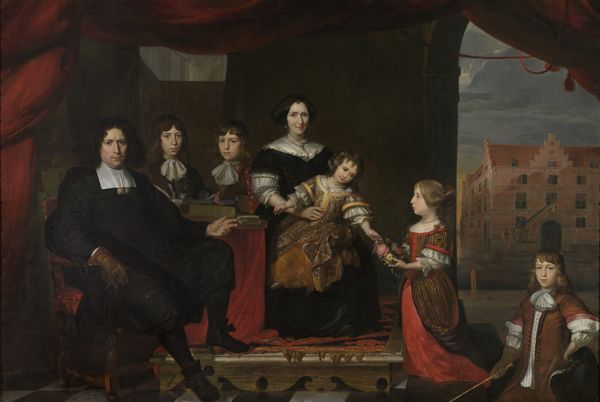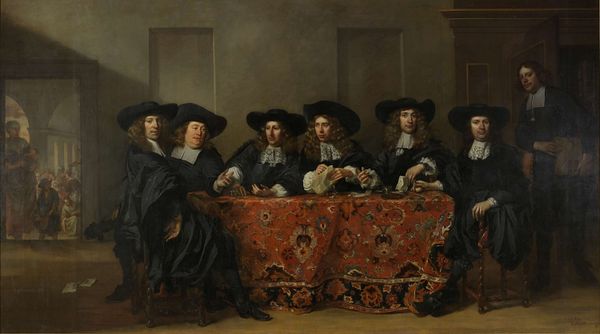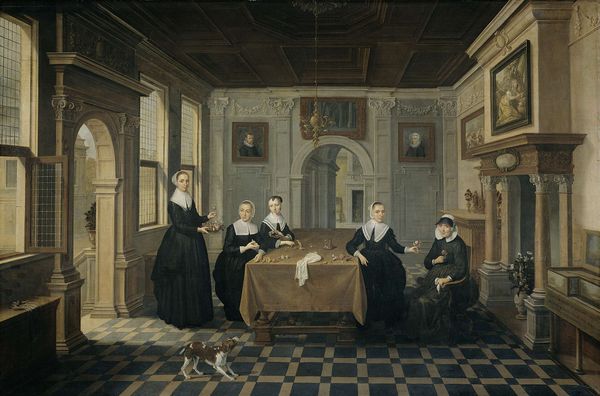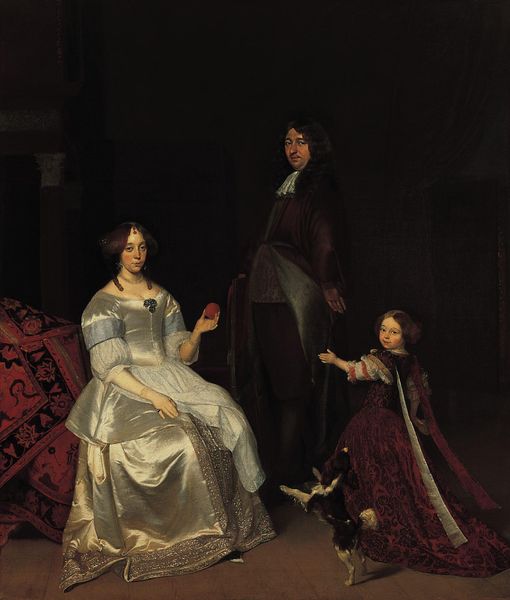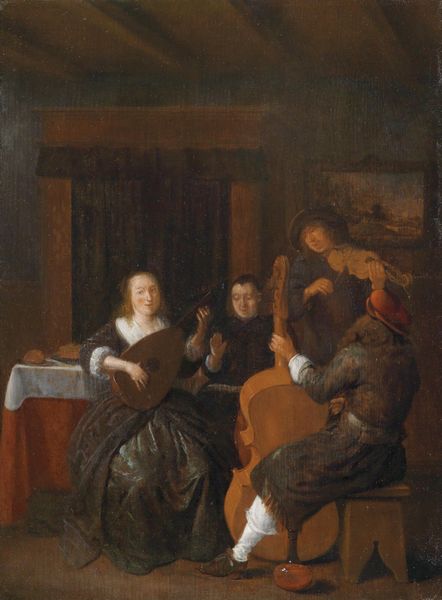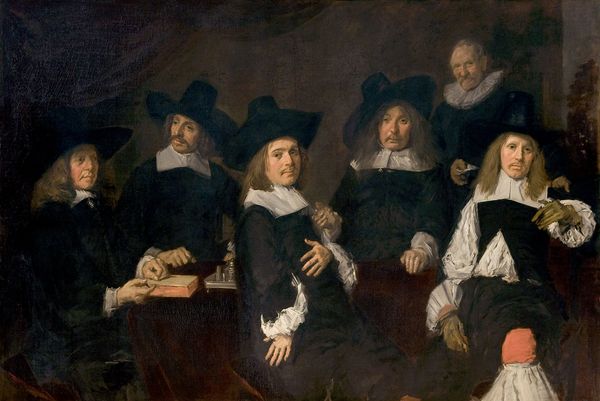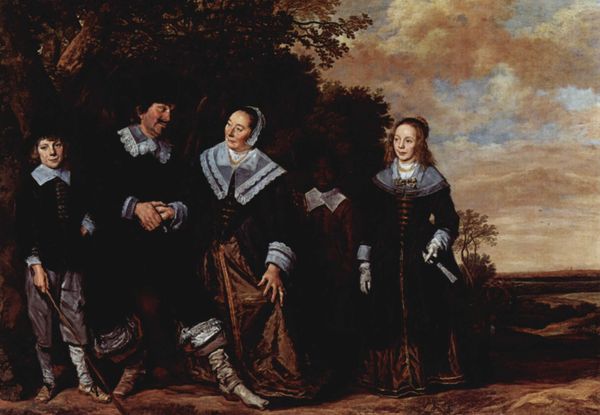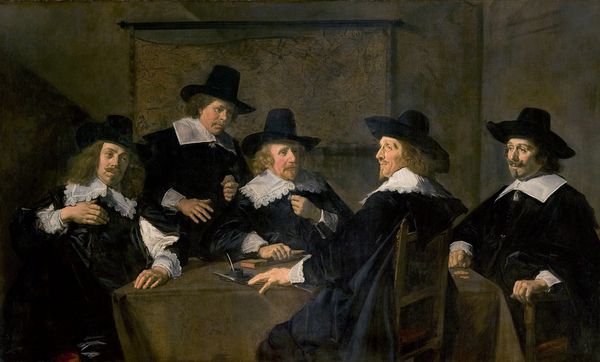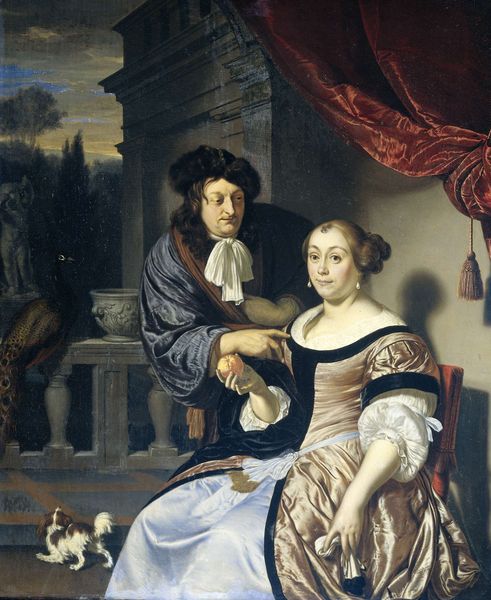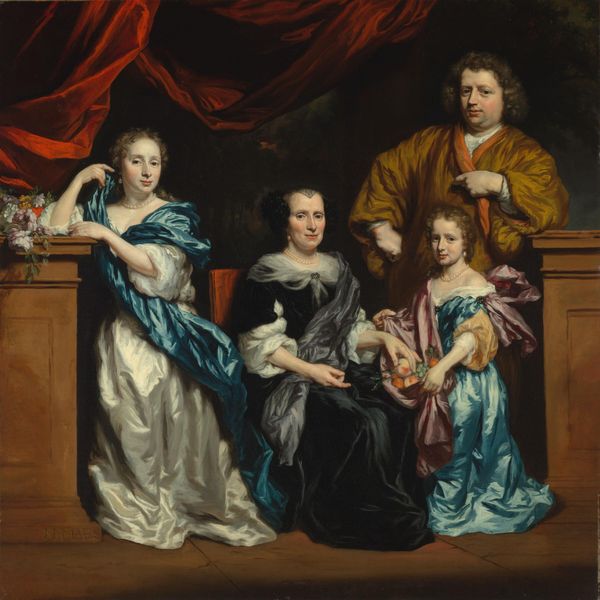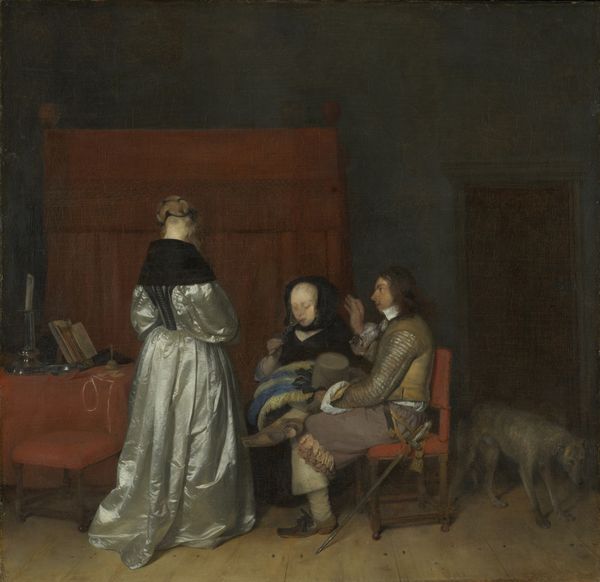
painting, oil-paint
#
portrait
#
baroque
#
painting
#
oil-paint
#
group-portraits
#
realism
Copyright: Public domain
Curator: Here, we’re looking at Ferdinand Bol’s "Portrait of the Three Regentesses of the Leprozenhuis". This is an oil painting that captures three women who held positions of authority in a leper colony, likely in Amsterdam. Editor: Immediately striking is its somber formality. The three figures, adorned in black and white, arranged stiffly around the table, suggest authority but also…perhaps, a kind of austere duty. The table itself is rather richly textured, creating an intriguing contrast to the dark clothes. Curator: Yes, consider the circumstances—the governance of a leper colony. These weren't casual socialites. Their clothing speaks to civic responsibility, echoed by the account books and inkwells displayed on the tabletop, tools of their administrative labor. Their material circumstances denote power and societal role. Editor: From a formal standpoint, the limited palette heightens the impact of the composition. The blacks and whites articulate the forms with stark clarity, directing the viewer's eye to the faces. Observe how the light falls—a careful distribution to emphasize each woman's features and subtle, individual differences. Curator: Right, the clothing is fascinating. It suggests something about the cloth trade in Amsterdam, too, where luxury textiles had become markers of identity and capital. I wonder, were the garments newly commissioned or part of existing wardrobes, thus signifying years of service? We should note the lace—handmade, time-intensive—the social production values of these signifiers. Editor: Indeed. The composition subtly leads the eye from left to right, perhaps mimicking the flow of responsibility, starting with the leftmost regentess seemingly presiding over the table’s objects. Note, also, the realism of the women's faces—unflattering, candid. Curator: And each individual is differentiated slightly through dress, ornament, and posture. Consider how this variety could reveal power structures or individual status within this cohort. Even with those signifiers they are unified by material prosperity. Editor: The painting leaves me pondering the women’s collective role in what must have been difficult times. Curator: A striking piece that really brings forth the weight and material elements of civic service in the 17th century, a testament to administrative duties visualized through fabric, furnishings, and flesh.
Comments
No comments
Be the first to comment and join the conversation on the ultimate creative platform.
